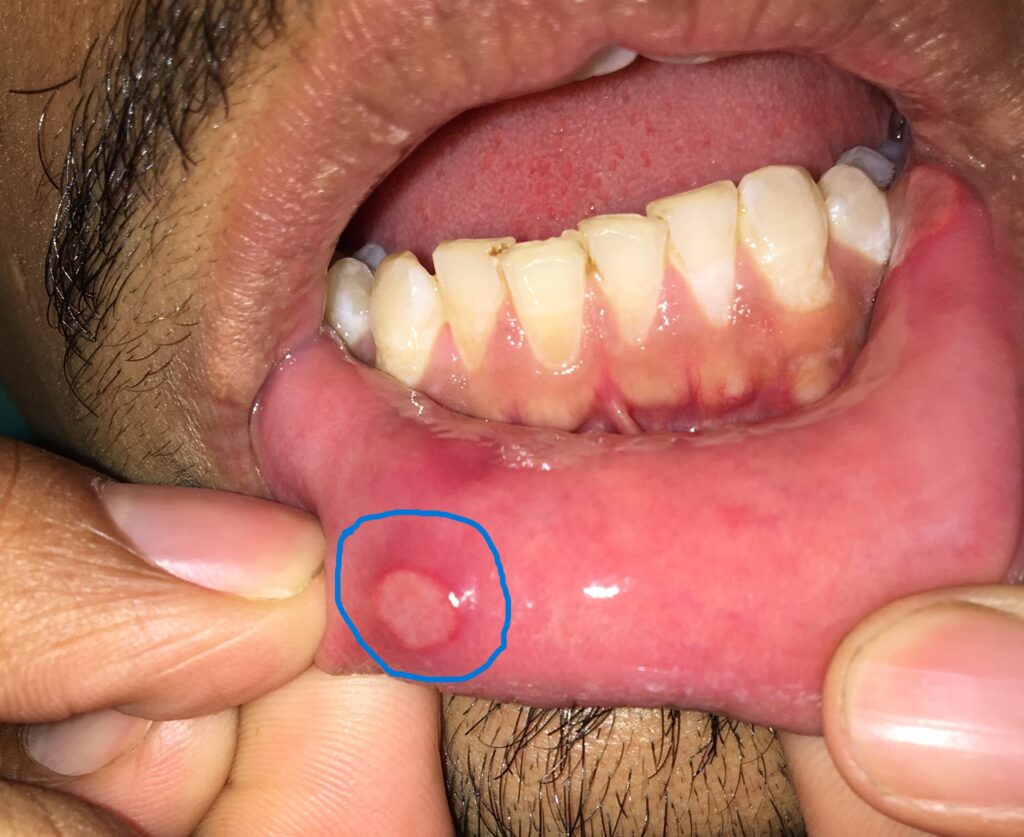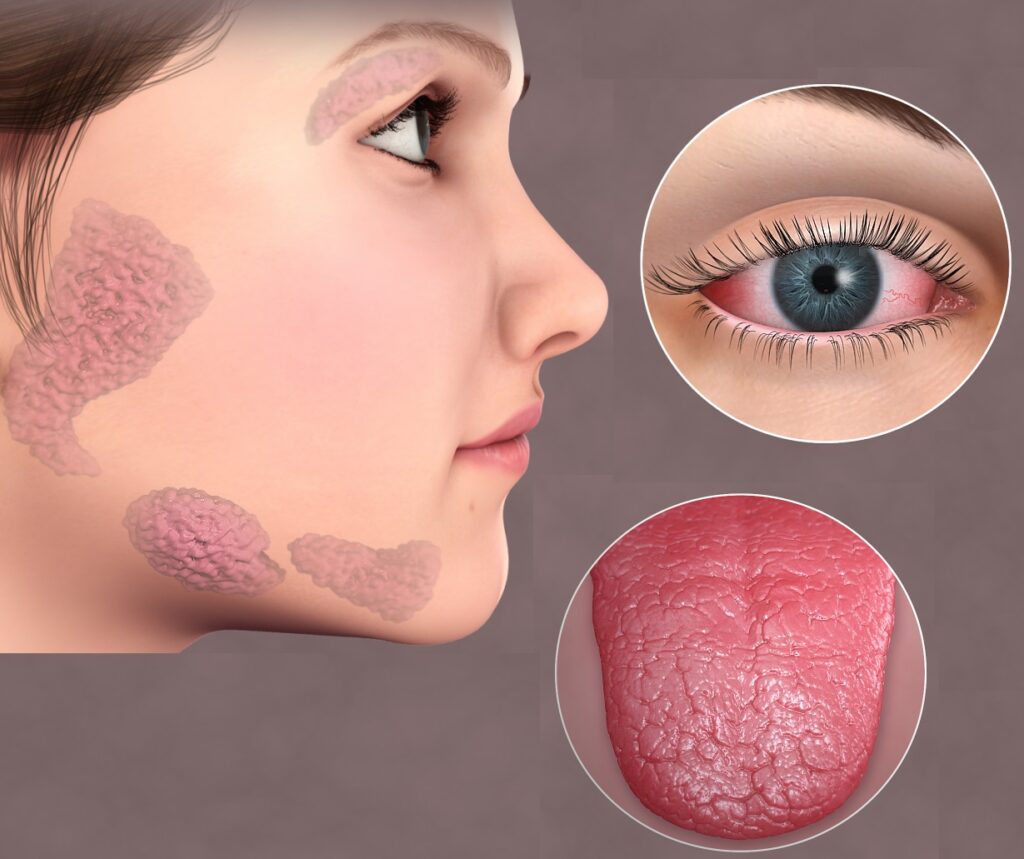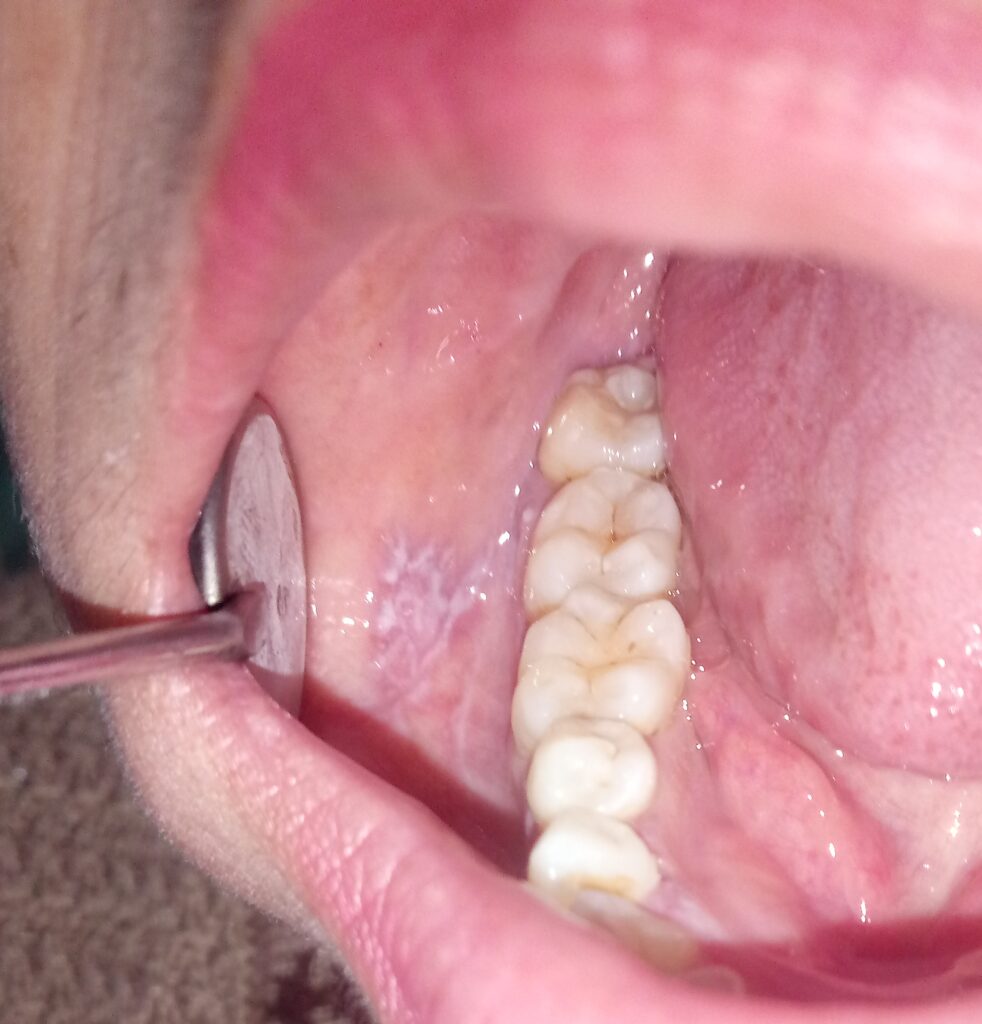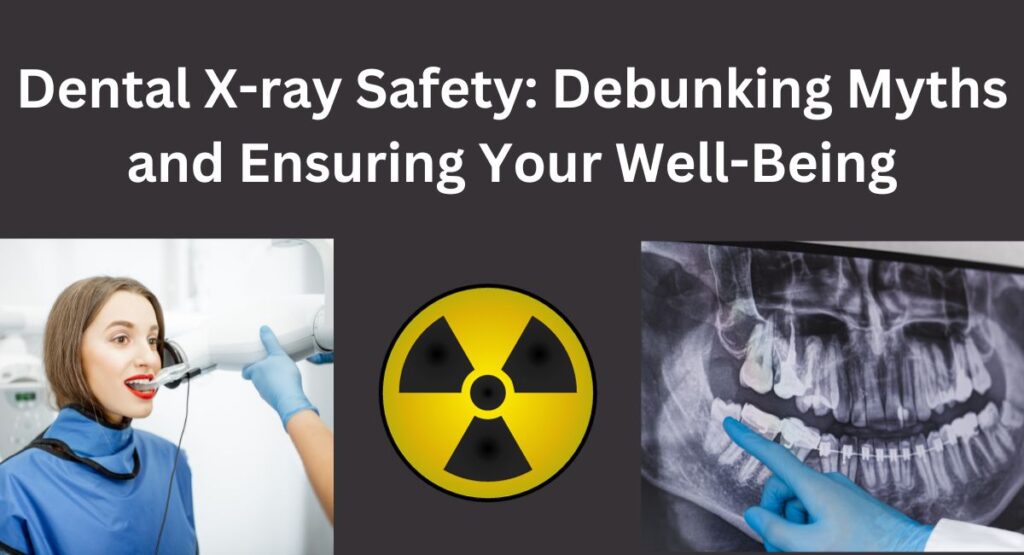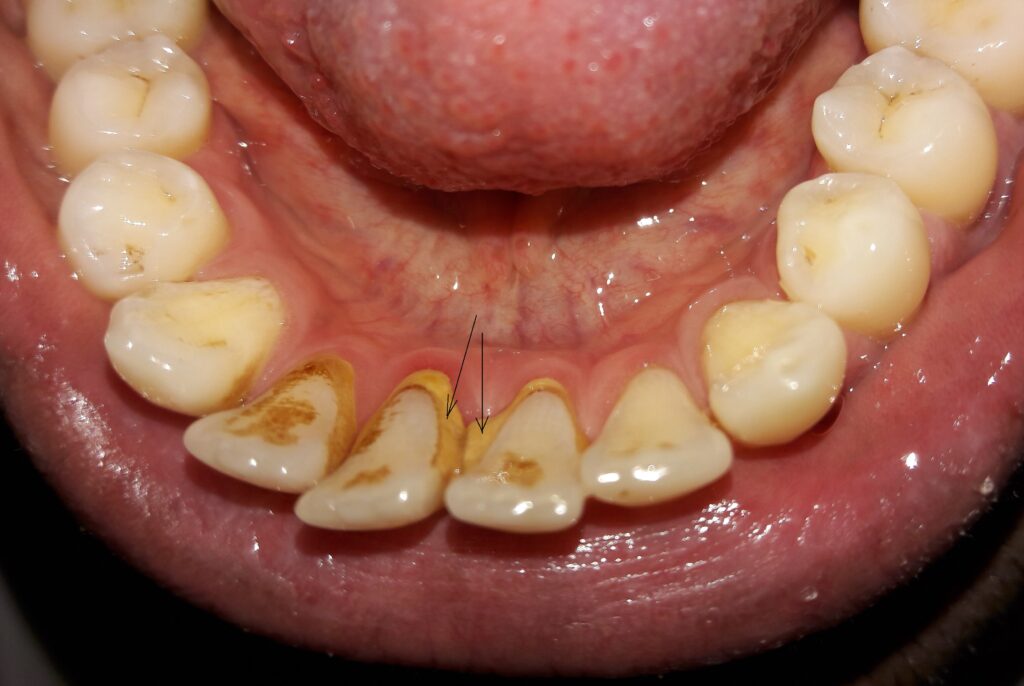
Initial gum disease caused by dental tarter
Despite dental plaque being the primary cause of tooth decay and gum disease, dental tarter also significantly contribute to the progression of these dental conditions, particularly gum disease. Allowing tarter build up on your teeth can promote the formation of dental plaque, which can lead to variety of dental problems, such as gum disease and tooth decay. Unlike dental plaque, tarter cannot be removed by brushing and flossing once it has been formed, and only dental professionals can remove it. Tarter doesn’t contain any live microbes or active toxin; however, it makes perfect bed for plaque adhesion and accumulation. In this article, we will explore the causes, complications, treatment and prevention of dental tarter.
What is Dental Tarter?
Dental tartar, also known as dental calculus, is a hard, yellowish calcified deposit that forms on the teeth, both above and below the gum line. In short, tarter is nothing but calcified plaque.
What causes Dental Tarter?
Tarter forms on your teeth when plaque is not removed. If you do not brush and floss daily, dental plaque left on your teeth accumulates minerals from your saliva and hardens into a rough, off-white to yellow substance called dental tarter within 48 hours of plaque formation.
What are the features of Dental Tarter?
Dental tarter may not cause any noticeable symptoms, which is why regular self as well as professional check-up are crucial to detect and treat tarter and other dental problems in early stage.
Features of dental tarter can include:
- Off-white to yellow or brownish hard deposits on the teeth, both above and below the gum line.
- It usually forms at hard-to-reach areas, such as in-between the teeth and below the gum line.
- Firmly attached on your teeth.
- Rough or irregular surfaces on your tooth enamel.
What are the complications of Tarter?
Tarter builds up on your teeth can promote the accumulation of dental plaque, which can lead to a variety of dental problems, such as gum disease, bad breath and tooth decay.
Tarter typically forms on the surfaces that are either difficult to clean or not exposed to chewing excursions, such as interdental spaces and under the gum. The irregular surfaces of tarter create a perfect bed for further plaque adhesion. Thus, it provides a hiding place for plaque under your gums, making plaque removal more difficult for you. Repeated tarter formation under the gums can pull the gums away from the tooth, creating a pocket that allows for more plaque accumulation. This cycle of plaque formation leading to tarter build-up, and vice-versa, continues, which can cause gum disease and ultimately result in tooth loss.
Tarter is firmly attached to the tooth surfaces, preventing decay from forming underneath it. Tooth decay rarely develops in areas where tarter accumulates. Decay typically forms in areas with repeated fresh plaque build-up, while gum disease develops in areas with a cycle of tarter-plaque-tarter accumulation.
Tarter causes:
- Gum disease (pyorrhea) – The initial stages may cause red, swollen, and bloody gums, while advanced stages may lead to gum recession, mobility in teeth, and ultimately tooth loss.
- Infection – If tarter and early tooth disease go undetected and untreated, you could develop a painful gum infection.
- Bad breath (halitosis) – tarter promote plaque and bacteria build-up.
- Tooth sensitivity – Tarter build-up can cause the gums to pull away from the teeth, which can lead to tooth sensitivity.
- Tooth decay – While tarter itself never causes decay, tarter build-up can promote accumulation of plaque, which can lead to decay in adjacent normal tooth surfaces.
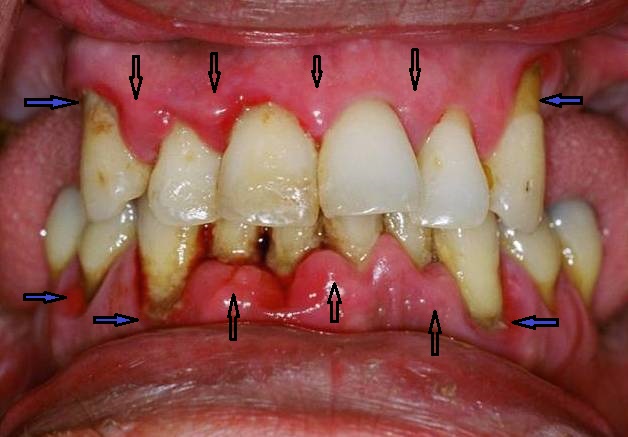
Advance gum disease
Thus, tarter accumulation can make it harder to keep your teeth and gums clean, which increases the risk of developing oral health problems.
Treatment of Dental Tarter
- Though you can remove plaque by brushing and flossing regularly, plaque that has hardened into tarter cannot be removed by brushing and flossing, and only dental professionals can remove it through a process called scaling and root planing.
- Dentist or oral hygienist can remove tarter when you have a regular check-up and cleaning. Because tarter can build up in hard-to-reach places, visiting a dentist twice a year for a check-up and cleaning can help to remove any tarter build-up that has occurred since your last visit.
It is important to regularly remove tarter to maintain good oral health and prevent complications such as dental diseases, especially gum disease.
Precautions to be taken when dealing with Tarter
- Do not try to remove tarter by yourself at home, as you may injure your teeth or gums.
- Do not use tarter-control or charcoal-based toothpaste unless it is advised by your dentist, as these pastes can cause abrasion of your teeth. Some studies have suggested that patients may experience tooth sensitivity and adverse soft tissue reactions when using the tarter-control toothpastes. You should always use toothpaste approved by your country’s dental association and has an RDA (relative dentin abrasivity) of 250 or less. Remember, once your teeth are damaged, they cannot be regenerated or repaired on their own and only a dentist can restore them.
- Do not use teeth-whitening strips to remove tarter as it can damage your teeth and gums.
How to Prevent Tarter Build-up
“Stop tarter by stopping plaque”. Plaque can harden into tarter in as little as 24 to 72 hours, which is why it’s so important to brush and floss daily.
Good Oral Hygiene
Good oral hygiene, including regular brushing and flossing; removes plaque and prevents tarter build-up.
- Brush twice a day: Brush your teeth at least twice a day, and preferably after every meal. Use a soft-bristled toothbrush and fluoride toothpaste, and brush your teeth for at least two minutes each time. Use circular motions, gentle and short strokes, focusing on cleaning all tooth surfaces, including below the gum line.
- Floss daily: Floss your teeth at least once a day, especially after dinner before going to bed. Floss is not a substitute for a toothbrush, but it is equally important. It removes plaque from hard-to-reach areas between the teeth where a toothbrush can’t reach.
- Water floss: A water flosser, also known as oral irrigator, is a handheld device that uses a stream of water to remove food debris and bacteria from between the teeth and below the gumline.
- Clean your tongue: Gently clean your tongue using a tongue brush/blade.
- Mouthwashes:
It is advisable to avoid using anti-germ mouthwashes on a daily basis, unless advised. These mouthwashes should only be used in specific situations and for specific period of time, such as during acute infections, hospitalization, or postoperative period. In general, mechanical measures like toothbrushing and flossing have been proven to be more effective in keeping teeth free from plaque than chemical measures like mouthwashes and antibiotics. Mouthwashes can also lead to regular exposure to chemicals, including antibiotics.
Regular dental visit
Visit your dentist regularly for check-up and professional cleaning, at least every six months. The frequency of dental visits should be dependent on your oral health and your dentist’s recommendations.
People who need tarter removal more often include:
- People with dry mouth, often caused by medications or aging. Saliva plays a crucial role in protecting the teeth and gums by helping to wash away food particles and bacteria.
- Those who lack the physical dexterity to thoroughly brush their teeth.
- Those who have limitations in their ability to understand or carry out a proper dental hygiene routine.
- Those with crooked or crowded teeth.
- Those who wear braces to correct misaligned teeth.
- Those who have restricted mouth opening.
Eat healthy foods
Limit your intake of sugary and starchy foods and drinks. Eat more nutritious foods such as fresh vegetables and fruits. These foods are made to require chewing, which produces saliva and helps to wash away food debris and bacteria that can contribute to plaque build-up.
Chew your food
Chewing your food thoroughly not only helps in a self-cleansing process, but also kickstart the digestion, paving the way for a healthier and more efficient nutrient absorption.
Drink water
Drink plenty of water daily in order to promote good oral as well as overall health.
Avoid use of tobacco
While tobacco use may enhance the development of dental plaque and tarter, it is also a well-established risk factor for various types of cancer. To learn more about how to quit tobacco, read our article “Quitting Tobacco: From Smokes to Success – Your Journey to Becoming Healthier, Wealthier, and Famous”.
Self-examination
Periodic self-examination of your teeth and mouth is also very important to maintain good oral health and detect any potential issues early on.
Other preventive measures
- Dental sealants: It seals the natural pits and fissures present on the top chewing surfaces of your teeth, and thus prevent plaque from forming on those surfaces.
- Fluoride Treatment: Fluoride is known to effectively slow down the growth of plaque-causing bacteria, while also providing a protective seal over the micro pits and fissures that naturally occur on the teeth.
- Dry mouth: If you experience dry mouth, it is important to consult your oral physician for proper diagnosis and treatment. It is advisable to drink ample amount of water and rinse your mouth after each meal in order to promote good oral hygiene and overall health. You may find relief by using over-the-counter available salivary substitutes.
- Treatment for crooked or crowded teeth – Can prevent tarter build-up and improve dental health.
Most importantly, you need to start all these oral hygiene practices from early childhood, and maintain them throughout the life.
Conclusion
Tarter build-up can significantly impact your quality of life if not addressed. By brushing and flossing daily, eating healthy foods, and visiting your dentist regularly, you can keep your teeth healthy and tarter-free.
FAQs
What is dental tartar (calculus)?
Dental tartar, also known as dental calculus, is a hardened deposit that forms on the teeth. It is made up of plaque, saliva, and minerals. Plaque is a sticky film that forms on the teeth after eating or drinking. If plaque is not removed regularly, it can harden into tartar.
What are the causes of dental tartar?
There are a number of factors that can contribute to the formation of dental tartar, including:
- Poor oral hygiene: If you do not brush and floss your teeth regularly, plaque can build up on your teeth and harden into tartar.
- Dry mouth: Dry mouth can make it more difficult for saliva to wash away plaque and bacteria.
- Smoking: Smoking can increase the amount of plaque on your teeth and make it more likely to harden into tartar.
- Certain medical conditions: Some medical conditions, such as diabetes and HIV/AIDS, can make you more prone to developing tartar.
- Certain medications: Some medications, such as antidepressants and antihistamines, can cause dry mouth, which can lead to the formation of tartar.
What are the symptoms of dental tartar?
Dental tartar can be visible on the teeth as a hard, yellow or brown deposit. It can also cause:
- Bad breath
- Swollen and red gums
- Bleeding gums when brushing or flossing
- Loose teeth
What are the risks of dental tartar?
Dental tartar can lead to a number of oral health problems, including:
- Gingivitis: Gingivitis is the mildest form of gum disease. It is caused by inflammation of the gums.
- Periodontitis: Periodontitis is a more severe form of gum disease. It can cause damage to the gums, bones, and ligaments that support the teeth.
- Tooth loss: Periodontitis can eventually lead to tooth loss.
- Other health problems: Some studies have linked dental tartar to other health problems, such as heart disease and stroke.
How can I prevent dental tartar from building up?
The best way to prevent dental tartar from building up is to maintain good oral hygiene. This includes:
- Brushing your teeth twice a day for two minutes each time
- Flossing your teeth once a day
- Using a mouthwash that contains fluoride
You should also see your dentist for regular checkups and cleanings.
How is dental tartar removed?
Dental tartar can only be removed by a dentist or hygienist during a professional dental cleaning.
What are some tips to control tartar buildup?
Here are some tips to help control tartar buildup:
- Brush your teeth twice a day for two minutes each time
- Floss your teeth once a day
- Use a mouthwash that contains fluoride
- See your dentist for regular checkups and cleanings
- Avoid smoking
- Manage any medical conditions that may increase your risk of tartar buildup
- Take any medications that your dentist prescribes to help control tartar buildup
By following these tips, you can help to control tartar buildup and keep your teeth and gums healthy.


